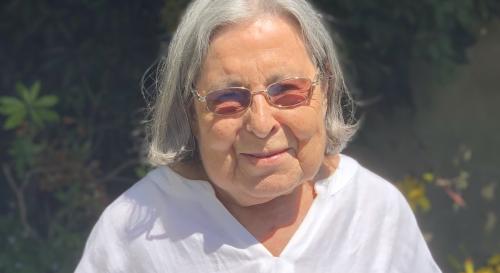
Breadcrumbs navigation
Leadership decapitation in civil war: Leadership arrest and the negotiations between the state and the insurgents.
Ulaş Erdoğdu discusses the key arguments from his new Review of International Studies (RIS) article. If you'd like to know more you can read the full article here - Leadership decapitation in civil war: Leadership arrest and the negotiations between the state and the insurgents.
Leadership decapitation in civil war: Leadership arrest and the negotiations between the state and the insurgents
Leadership decapitation—targeting top insurgent or terrorist leaders through arrest or assassination—has become a common tactic in both domestic and international counterinsurgency campaigns. But does it work? And what do we mean by “work,” exactly? In my recent article, I argue that the literature on leadership decapitation has been preoccupied with one narrow question: whether removing a leader weakens an insurgent group’s operational capabilities. This emphasis on short-term military impact has obscured a critical political dimension and consequence of leadership decapitation, namely, how leadership decapitation shapes the prospects for negotiation between insurgents and the state. My article urges a reconceptualisation of decapitation strategies, one that (1) disaggregates leadership arrest from leadership killing, and (2) treats decapitation not just as a military tactic but as a move with potentially profound implications for bargaining dynamics. These two shifts are especially important in civil war contexts, where insurgent groups often have political wings and civilian constituencies, and where negotiations are frequently the path (or at least the goal) toward ending violence. To explore these ideas, I analyze the case of Abdullah Öcalan, the leader of the Kurdistan Workers’ Party (PKK), who was arrested in 1999 and remains imprisoned today. While Öcalan’s arrest initially appeared to de-escalate conflict, I show that the long-term effects were far more complex—and in many ways counterproductive to conflict resolution. This case demonstrates that leadership arrest can open windows of opportunity for negotiation in the short term, but may also fuel organisational fragmentation and hardliner ascendance in the longer run.
From killing vs. arrest to bargaining games
Most existing studies lump arrest and assassination together under the term “leadership decapitation” and assess their impact on metrics like group lethality or duration of conflict. I argue that this is analytically imprecise. Killing a leader ends their influence. But arrest, especially of charismatic or founding leaders, often initiates a new bargaining game involving three actors: the state, the organisation, and the imprisoned leader. This triadic dynamic creates unique incentives. An arrested leader—especially one who retains symbolic or organisational authority—has an interest in proving control over the group. To do so, they may offer costly concessions to the state (e.g., ceasefires or withdrawals) to signal their credibility as a negotiating partner. At the same time, such moves risk alienating hardliners within the organisation, leading to internal fragmentation, loss of cohesion, or even escalation. In short, arrest can change the political game entirely. It does not simply “weaken” the organisation; it reconfigures the political space and incentive structures in ways that standard decapitation metrics fail to capture.
The Öcalan Case: A window into temporal dynamics
The arrest of Abdullah Öcalan offers a compelling case study of these dynamics. As the founder and leader of the PKK, Öcalan wielded enormous symbolic and practical power. After his capture in 1999, he declared a unilateral ceasefire, ordered PKK forces to withdraw from Turkey, and urged peace. These actions were designed not only to initiate dialogue with the Turkish state but to demonstrate that he still controlled the movement from prison. Initially, this strategy seemed to work. Violence subsided, and Öcalan maintained his status as leader. Yet, his concessions triggered internal unrest within the PKK. Many militants were disillusioned, particularly after the withdrawal led to the deaths and arrests of hundreds of fighters. The group split into factions—some loyal to Öcalan’s peace-oriented vision, others aligned with hardliners who saw concessions as betrayal. When the Turkish state failed to meaningfully engage Öcalan’s peace overtures, his position became increasingly precarious. To reassert influence and pressure the government, Öcalan shifted toward supporting hardliners and sanctioned the resumption of armed struggle in 2004. This marks a crucial turning point: arrest, rather than removing a leader from the battlefield, had brought him back into the center of a now more complex and fragmented conflict. Moreover, a dual leadership structure had emerged, with Öcalan speaking from prison and other PKK leaders operating on the ground. Peace negotiations that occurred during this time had to accommodate this fragmentation, complicating the bargaining process and introducing more veto players.
Theoretical contributions
The case of Öcalan allows us to trace multiple pathways through which leadership arrest can impact negotiation dynamics. I offer a theoretical framework that identifies five key stages and pathways:
- Concessions: The leader makes costly gestures (e.g., ceasefires) to signal credibility and control
- Turmoil: Internal dissent and fragmentation weaken organizational cohesion
- Escalation: When the state fails to reciprocate, the leader aligns with hardliners and supports renewed violence
- Re-consolidation via violence: Violence becomes a tool to unify factions and reassert leadership
- Dual leadership and fragmentation: A split between imprisoned leaders and commanders in the field creates bargaining complexity
This sequence shows how the effects of leadership arrest evolve over time. A decapitation that appears “successful” in the short term may ultimately prolong conflict or undermine peace efforts in the long run. This temporal variation has largely been overlooked in the literature.
Beyond the PKK: Broader implications
Although Öcalan’s case is unique, the framework developed here applies to other contexts as well. Founding or charismatic leaders—such as Nelson Mandela, Marwan Barghouti, or Yahya Sinwar—often retain influence from prison. Arresting such figures does not eliminate their leadership role; instead, it opens up new multi-actor bargaining processes. Their imprisonment or potential release can become a core issue in negotiations, as seen in the ANC’s transition in South Africa or the Israeli-Palestinian peace process. Moreover, arrest—unlike assassination—creates incentives to defect or cooperate, especially when personal freedom is at stake. It also allows the state to co-opt leaders or use them to promote a peace agenda. But it can also backfire: marginalising leaders in prison can empower more radical voices on the ground. The effectiveness of leadership decapitation, then, depends not just on who is removed, but how, when, and what comes next. Killing a hardliner may embolden moderates; killing a moderate may do the opposite. Arresting a symbolic leader may fragment an organization—or make him a kingmaker in peace talks.
Policy implications
The article concludes with a note of caution for policymakers. Leadership decapitation is not a surgical tool; its effects are uncertain, dynamic, and often counterintuitive. Before pursuing arrest or assassination, states should consider:
- What role the leader plays in the organisation’s internal dynamics
- Whether the leader is replaceable or likely to retain influence
- How their removal may affect the group’s willingness or ability to negotiate
- Whether the move will empower hardliners or moderates
- Whether the state is willing to engage in good-faith negotiations if such a window opens.
Rather than treating leadership decapitation as a military endgame, it should be analysed as part of a broader political strategy that interacts with rebel cohesion, public legitimacy, and the incentives of all parties.
Conclusion
Leadership decapitation is more than just a tactic—it is a political act with deep ramifications for conflict trajectories. By disaggregating arrest from killing, and shifting attention from battlefield metrics to bargaining dynamics, we can better understand its complex effects. Through the case of Öcalan and the PKK, my article challenges the idea that decapitation can be neatly labeled as “successful” or “failed.” Instead, it shows that leadership arrest can simultaneously open and close paths to peace—depending on how states respond, how organisations adapt, and how power and legitimacy are contested over time. Ultimately, to make sense of these outcomes, scholars and practitioners alike must attend not just to whether a leader is removed—but to what happens after.
Want to know more? You can read the full article at DOI: https://doi.org/10.1017/S026021052510106X
This particular article is open access, however BISA members receive access to RIS (and to our other journal European Journal of International Security) as a benefit of membership. To gain access, log in to your BISA account and scroll down to the 'Membership benefits' section. If you're not yet a member join today.
Photo by Martin Sanchez on Unsplash


